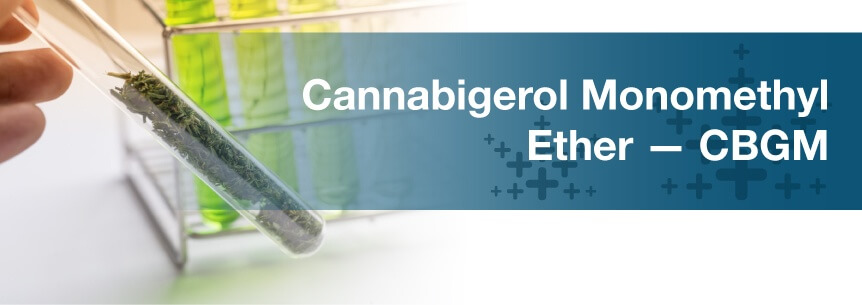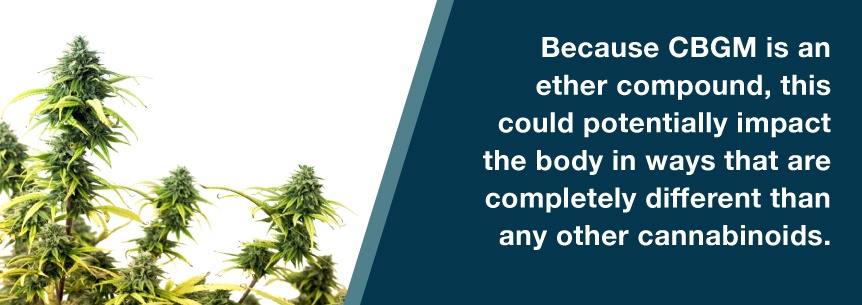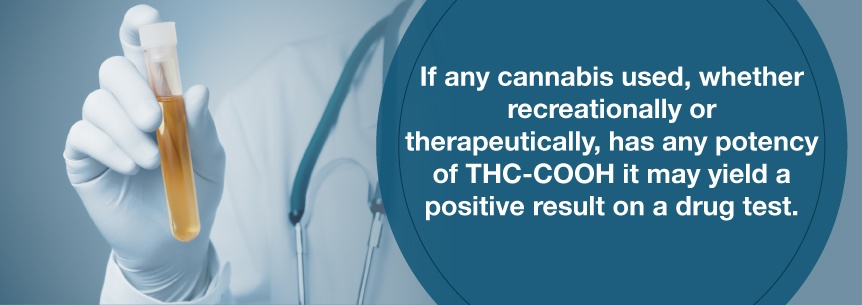
The legalities surrounding the use of cannabis in the United States have been evolving over the last thirty years. In states like Minnesota, licensed health care practitioners can prescribe medical cannabis to those residents who are diagnosed with one or more qualifying conditions. Some other states — California, for example — allow residents aged 21 and over to use, possess, share and grow cannabis. However, there are still many states awaiting medical marijuana legalization. As more states legalize pot, more research is being conducted on the cannabis plant.
Currently, there have been at least 85 compounds identified in the cannabis plant, referred to as cannabinoids. These compounds activate CB receptors in the body that can positively impact health. Cannabigerol, also known as CBG, is a cannabinoid group that is found in hemp. Unlike other strains, these cannabinoids do not create a high within the body from THC. Instead, it is suggested that CBG actually blocks the metabolic action and psychoactive effects of THC while still providing medicinal benefits.
There is hope that all members of the cannabigerol cannabinoid group can provide patients with specific medical benefits and limited potential side effects. At this time, many of the cannabinoid compounds are still undergoing research, however, the limited knowledge base that has been established does shed light on the many potential uses for cannabinoids in the CBG group. One of these cannabinoids is known as cannabigerol monomethyl ether, or CBGM. Though little is known about this compound, it may hold the potential to relieve various health issues.
Cannabigerol monomethyl ether is a natural cannabinoid classified into the cannabigerol — CBG — group. These cannabinoids are grouped together because they possess properties similar to CBG. Like many other cannabinoids, not much is currently known about CBGM. The highest concentrations of CBGM have been found in cannabis plants from north-east Asia. During one study in which cannabis plants were grown in Sweden, seeds originating from South Africa displayed increased levels of CBGM. It is unknown whether this was organic or if cross-pollination impacted the results.

Scientists from Kyushu University in Japan discovered CBGM in 1968 after isolating it from a Japanese hemp strain called Minamioshihara No. 1. When using acid to separate compounds from cannabis, they discovered syrupy substance with a pale-yellow coloring which then was referred to as CBGM. This team also yielded CBGM by using methylation, which is the process of adding methyl molecules. CBGM is only one of two cannabinoids in the CBG group that is an ether compound — an oxygen atom bonded to two aryl or alkyl groups.
Aside from its molecular structure, researchers do not know what makes CBGM different from other cannabinoids in the CBG group. There is a possibility that it may affect the human body in ways that are similar to other CBG cannabinoids. However, because CBGM is an ether compound, this could potentially impact the body in ways that are completely different than any other cannabinoids. To gain a better understanding of how CBMG may compare to CBG, researchers observe other similar strains.

Cannabidiol, CBD, has a counterpart called cannabidivarin, CBDV, that is similar in structure. Both are non-psychoactive cannabinoids that provide anxiety relief without giving the user the high they could get from THC. In contrast, tetrahydrocannabinol, THC, has a counterpart called tetrahydrocannabivarin, or THCV. THCV can actually counteract the effects of THC, suppressing an individual’s appetite instead of giving them an increased hunger. Although these are only two examples, it sheds light on the fact that similar cannabis compounds may or may not yield similar medical benefits.
To truly understand how CBGM can help patients, more research is required. As of this moment, we can only speculate as to how CBGM may provide relief to those suffering from various health conditions. If CBGM does indeed mimic the effects of CBG without producing any negative side effects, CBGM could potentially help patients with the following conditions:
To learn more about the potential health benefits of cannabigerol monomethyl ether and other cannabinoids in the CBG group, speak with a dispensary staff member or schedule a consultation with a licensed and knowledgeable marijuana-trained physician.
As with any natural or artificial substance you ingest, compounds found in the cannabis plant have the potential to negatively impact your health. Though many studies have concluded that the short-term use of cannabinoids is safe, there also exists speculation on whether an individual can become addicted to cannabis through long-term usage. Though some evidence suggests that a dependency can be developed, there have not been long-term studies supporting those concerns. Conversely, some research actually believes that certain cannabinoids could be used to treat addictions to other substances.
Though little is still known about the short and long-term effects of cannabigerol monomethyl ether on the human body, any individual who considers using this or another compound in the cannabigerol cannabinoid group should do so only under the supervision of a licensed and trained marijuana doctor or with guidance and information provided by a knowledgeable dispensary staff member. Just as an individual could have a negative reaction to common drugs like acetaminophen or ibuprofen, there is a chance one could react negatively to any form of cannabis.
New research suggests that the increased use and abuse of cannabis can cause some individuals to experience a condition known as Cannabinoid Hyperemesis Syndrome (CHS). Although cannabis has been used to relieve symptoms of nausea and vomiting, THC, CBD and CBG cannabinoids can have opposing effects on the gastrointestinal and central nervous systems, causing abdominal pain, nausea and vomiting in users. Many of the symptoms of CHS are also common in Cyclic Vomiting Syndrome, which could delay a CHS diagnosis.
Though CHS is still not fully understood nor recognized by medical professionals, it should be no surprise that some individuals may experience negative side effects when using a cannabinoid, including CBGM, for medicinal purposes. Many people have sensitivities to other natural substances including caffeine, and the possibility of a sensitivity, intolerance or physiological aversion to cannabis should be acknowledged. In fact, hypersensitivity and allergic reactions to cannabis have been reported and can manifest in a variety of immediate and delayed symptoms.
The growing popularity of medical marijuana has only continued to receive an increase in interest as more states legalize the substance for medicinal applications. It should be noted that although many of these natural cannabinoids are not legalized on a federal level, the U.S. Food & Drug Administration (FDA) has approved the use of four synthetic drugs that contain or act similar to compounds found in the marijuana plant. One drug contains purified cannabidiol while the others have synthetic ingredients that are similar structurally or act similarly to marijuana.
These four synthetic and government-approved drugs are used for specific health conditions, including the treatment of seizures associated with Dravet syndrome or Lennox-Gastaut syndrome. However, the FDA still has not approved any form of natural cannabis because they do not consider it a safe or effective treatment option. Other synthetic cannabinoids can be considered similar in chemical composition or bodily effect and are also not approved by the FDA. Although some can be purchased by the general consumer in convenience stores or smoke shops, many are illegal.
Synthetic cannabinoids can be harmful. There is no way to be absolutely certain of which exact ingredients make up each individual type, and many of these synthetic drugs are believed to be harmful, addictive and even fatal. Agitation, irritability and dizziness are some of the lighter symptoms of brain function affected by these drugs. Major health problems from synthetic cannabinoids include heart attacks, kidney failure, seizures and muscle damage. The dosage, ingredients and pattern of usage could all influence the presence and severity of symptoms.

While scientific research and support back the use of cannabis-based medications, it’s important to understand that each natural derivative of cannabis is unique. Many, including CBGM and others in the CBG group, also require further thorough study. Because of the limited knowledge currently available, there is no certifiable way to know what effects one or a combination of these cannabinoids will have on the body when used as ingredients to create a synthetic drug. Even THC and CBD may react negatively when mixed with synthetic substances.
The legal issues regarding CBGM, and many other cannabinoids, can be confusing for those who may not be aware of the ways cannabis is regulated on a state and federal level. Marijuana has been approved for medical usage in over half of the United States. A portion of these states has also deemed marijuana acceptable for recreational use. Though over half of the country has accepted cannabis as a viable treatment option, the federal government has yet to approve cannabis use on a national scale.
Cannabigerol monomethyl ether is not specifically named on the current list of substances classified on the U.S. Drug Enforcement Agency’s five drug schedules. However, this does not mean that any unlisted substance is legal. Cannabis is listed as a Schedule I drug and any analog — meaning any substance that is structurally or pharmacologically similar to cannabis — is classified as a Schedule I drug. All forms of cannabis, including cannabinoids in the CBG group, are considered substances with high potentials for abuse and have no federally accepted medical application.
If you are considering using any substance that is derived from or contains ingredients that come from the cannabis plant, it should be assumed that it is considered an illegal substance in the eyes of the federal government. For those in states that have legalized medical or recreational marijuana usage, it’s recommended that you gain a thorough understanding of your individual state’s legislature regarding the legalities of cannabis possession and use. For the most accurate information, speak with your marijuana doctor or a local dispensary staff member.
Although marijuana has been legalized in many states for medical and recreational usage, cannabis in any form is still not federally recognized as a legal substance. It’s expected that this grey area can cause some individuals to be concerned about potentially suffering consequences of a failed drug test despite their use of the substance in accordance with the law. After all, the connotation of using a legitimately prescribed medication in a legalized state is vastly different than simply smoking weed recreationally in a prohibited state.
Regarding the use of cannabigerol monomethyl ether specifically, it is highly unlikely that an individual will ever be tested for this specific strain of cannabis. However, it is possible that an employer, police officer, judge or physician may require an individual to undergo a drug test. These drug tests will screen for marijuana use, specifically the metabolite THC-COOH. If any cannabis used, whether recreationally or therapeutically, has any potency of THC-COOH it may yield a positive result on a drug test.

Instead of considering the various forms of cannabis as variables that can be individually tested, consider a test for cannabis use to be similar to a test for alcohol use. A breathalyzer or blood test for alcohol use is conducted to determine whether alcohol is present in the body. It will not, however, test to determine the individual type of alcohol, like vodka or whiskey, that a person ingested. Similarly, a drug test will seek to determine if a THC-containing substance was used, not specifically CBD or CBGM.
Over the last few decades, support from physicians, researchers, lawmakers and the general public has resulted in new legislation that allows individuals in select states to use strains of cannabis for medical and recreational applications. As scientific interest in cannabis continues to grow, researchers are examining the different compounds derived from the cannabis plant in hopes to discover ways in which these substances could be used as treatment options for a myriad of physical, cognitive and psychological health conditions.
CBGM is one of the many compounds that can be derived from the cannabis plant. As a member of the CBG cannabinoid group, there is a limited amount of information regarding the potential benefits that CBGM may deliver to patients. Until more research is concluded, CBGM is still considered a Schedule I drug by the FDA and is not federally recognized to provide a safe and effective course of treatment for any health condition.
However, research conducted outside of the FDA has shown that CBG cannabinoids, including CBGM, could potentially be viable treatment options for patients who have been diagnosed with specific ailments. Stay up to date on the latest developments regarding CBGM and other forms of medical marijuana by signing up for our newsletter. To learn more about how cannabigerol monomethyl ether and other cannabinoids could benefit your health, speak with a marijuana-trained doctor or dispensary staff member.